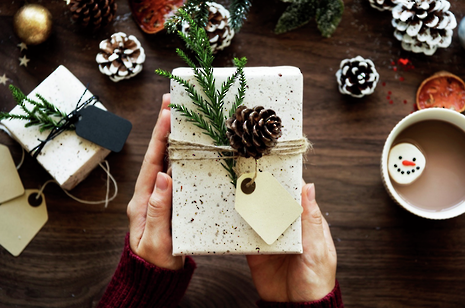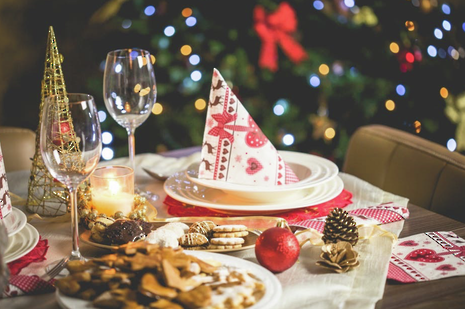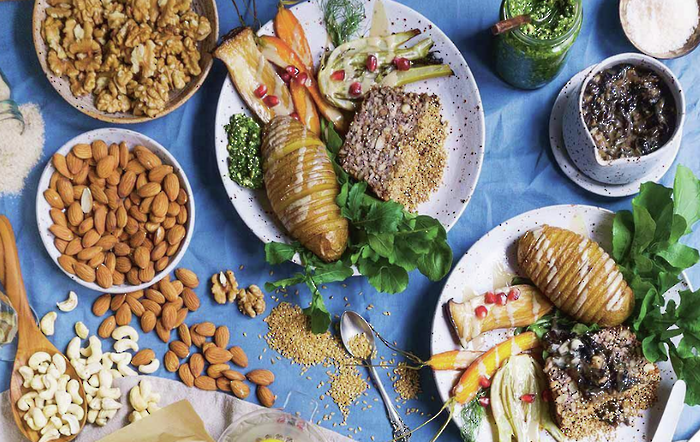
8 tips for an eco-friendly Christmas
Sophie Zhang tells Violet her top tips for a Christmas that won’t damage the planet or your Christmas spirit

Christmas is a time for fun and festivities, waking up in the morning to rush down to open your presents under the Christmas tree and sitting around the table for a huge Christmas feast. Yet unfortunately, the holiday season goes hand in hand with excessive consumerism and waste. We can all make small changes and compromises towards having a more eco-friendly Christmas without compromising the fun - here are some tips.
1) Christmas trees
Christmas trees are always the centrepiece of a picturesque Christmas, but unfortunately trees aren’t always handled in an environmentally friendly way: every year, 6 million Christmas trees end up in landfill sites. Artificial trees are not the magical solution as they often carry large carbon footprints and are made of unrecyclable plastics. Real trees are normally more environmentally friendly. To buy a sustainably grown tree, the British Tree Growers’ Association has a list of sustainable tree sellers near you, or simply look for Forest Stewardship Council certification. Try and buy a tree with roots as it can later be replanted, which is even better for the environment. And once Christmas is over, you can recycle your Christmas tree instead of sending it to a landfill site. Most local authorities provide services for recycling trees, and more information can be found here.
2) Christmas cards
Every Christmas, one billion cards are sold in the UK, and it’s a sad fact that most of them will end up in the bin, and then take up to 30 years to decompose. What can be done? Instead, have some crafty fun in making your own cards with recycled materials! Or if handicrafts aren’t your thing, there are plenty of cards for sale made from recycled materials. Alternatively, since we already live in the Age of the Internet, why not send some e-cards instead? Lastly, don’t forget to recycle your cards once Christmas is over, since this could save up to the equivalent of 248,000 trees.
“Buying gifts within the community can help support local businesses whilst minimising your carbon footprint”
3) Christmas decorations
Decorations always add a sprinkle of festive magic to the Christmas atmosphere. And there’s plenty of ways decorations could be more eco-friendly. Firstly, don’t be afraid to reuse last year’s decorations (which has the added bonus of saving money, too). Secondly, if you’re looking for new decorations, why not use some natural décor or make your own? The Guardian recommends getting creative using “natural goodies”, such as pine cones and cinnamon sticks alongside yummy edibles, such as candy canes and gingerbread, to decorate your tree. Or if you want some really unique Christmas décor, why not take a look at some of Revolve’s recycled decorations?
4) Wrapping paper
Every Christmas, we use 8000 tonnes of wrapping paper in the UK, which is enough to wrap up the Isle of Guernsey. That’s a lot of wrapping paper. That’s a lot of trees. So, to reduce waste this year, try to pack your presents carefully and use a minimal amount of wrapping paper. You could also use recycled wrapping paper or even ditch wrapping paper entirely and go with reusable gift bags. Even better - just don’t use wrapping paper. Once the flurry of Christmas gift-openings is over, remember to recycle the wrapping paper.
5) Eco-friendly presents
We all love waking up in the morning and running down to the Christmas tree to open our presents. But why not try giving some more eco-friendly presents this year? A simple Google search shows thousands of options. Buying gifts within the community can help support local businesses while minimising your carbon footprint. You could also get creative and make presents by hand. Alternatively, you could buy non-physical gifts, such as buying an experience package or sponsoring an animal. And if you’re not sure what to get someone, a gift card can be a great idea.
6) Food waste
5.3 million tonnes of food waste are produced every year. So let’s do our best this Christmas to ensure that we don’t create more food waste. Try and only buy the amount of food you need. It’s even better for the environment if you can buy organic and/or local food. If you don’t finish your Christmas meal, you can always keep the leftovers and eat them another time (and remember to compost vegetable leftovers and peelings if possible).
7) Fairy lights
For most of us, Christmas is synonymous with the sight of colourful street lighting, Christmas tree lights and fairy lights illuminating the dark winter nights. Using energy-saving bulbs or switching to LEDs or solar-powered lights is more eco-friendly - and remember to switch off the lights when you’re not using them.
8) Christmas candles

We all love some scented candles to put us in the mood for Christmas, but paraffin candles are produced from petroleum residue and therefore not great for your health or environment. Therefore, candles which are made from soy, beeswax or natural vegetable-based wax are a more environmentally-friendly option, especially since they are biodegradable.
Those are just eight quick tips for a more eco-friendly Christmas, but there are many ways to be more environmentally friendly during Christmas - sometimes Christmas can be more enjoyable when you know your efforts are helping to save the planet, and that’s something more valuable than any gift we could ask for

